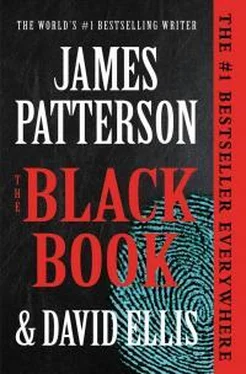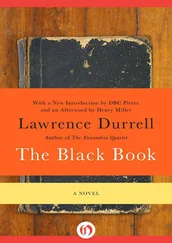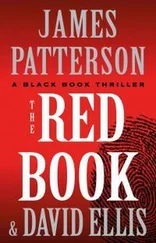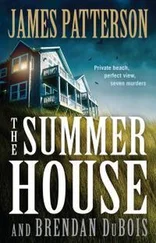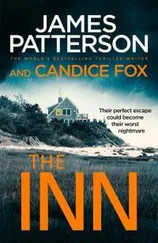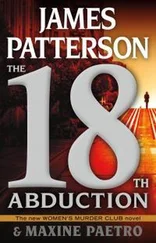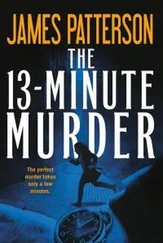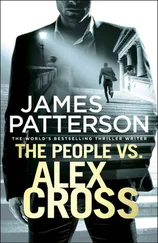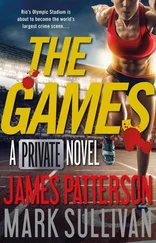A couple of the jurors laugh. I’ve always viewed Margaret Olson as having a stick up her ass, but I can’t deny that she’s drawing in this jury, speaking to them plainly, a nice blend of drama and folksiness. She’s a good politician.
I underestimated her, and I couldn’t have picked a worse time to do so.
“Amy had information that the manager of this sex club was keeping records right there in the brownstone—that she had a little black book. Amy was only days away from raiding that brothel and getting her hands on it—days away from having the proof that she needed against a corrupt Chicago cop.” Olson takes a step to her right. “We will show you the request for a search warrant that Amy was preparing. You will hear from one of the other prosecutors assigned to the investigation. But you won’t hear from Amy, the prosecutor in charge of the investigation. You won’t hear from her because the defendant made sure nobody will ever hear from Amy again.”
She turns and glares at me. Then she slowly nods her head.
“The defendant was smart,” she says. “Very smart. He learned about the state’s attorney’s investigation. He knew we were about to raid that sex club. So what did he do? He did something very, very clever.”
A dramatic pause while the jury wonders what I did that was so clever.
“He raided it first,” she says. “That’s right: the defendant, a homicide detective—someone whose job and rank had absolutely nothing to do with vice or prostitution or anything close to it—suddenly raided that brothel himself and arrested everyone inside.”
She opens her hands. “It was brilliant. It accomplished two goals, really. One was misdirection. Of all the cops in the world whom you might suspect of protecting a house of prostitution, the last one you’d suspect is the person who raided it, who exposed it—right? It made him look innocent.”
Several jurors nod, scribble in notepads.
“Smart,” says Olson. “And the second goal, which was even more important, was to find the brothel’s records. By storming into that brownstone before Amy could, the defendant beat her to the little black book. He stole it and destroyed it.”
Jurors nodding, the pieces coming together.
“But there’s still the sex-club manager herself, right? I mean, even if the little black book is gone, the manager can still testify about her payoffs to the police. Ramona Dillavou was her name. Ramona Dillavou ran that brothel.”
She puts an enlarged photo of Ramona Dillavou, taken at some party, on the easel next to Amy’s picture, part of the parade of victims.
“Ramona was still a threat to the defendant. More than ever. But Ms. Dillavou will not take the witness stand in this case, either. Because the defendant silenced her, too.”
I do another head shake, but I know—everyone in the courtroom knows—that Margaret Olson is doing a masterly job of pinning me down.
A lawyer once told me that 90 percent of trials are won or lost in the opening statement.
Olson holds out her hand, counts off on her fingers. “Fact,” she says, popping her thumb. “The defendant was under investigation for corruption.
“Fact: the defendant used his position to break into that brownstone before the investigators could, and the most damning piece of evidence up and disappeared.
“Fact: the lead prosecutor investigating him was murdered.
“Fact: the principal witness who could testify against him was murdered.”
Margaret Olson takes a moment, nods.
“And we’re just getting started,” she says.
Eighty-Seven
“I TOLD you the defendant was smart,” says Olson to the jury. “Very, very smart. He knew Amy was on to him. He knew she suspected him of stealing that little black book. You will hear from the chief law enforcement officer in this city, the top cop—police superintendent Tristan Driscoll. He will take that witness stand, he will swear an oath, and he will tell you that Amy accused the defendant of stealing that little black book when she questioned him after the brownstone was raided.”
Olson strolls a step or two to one side for a segue. For someone who spends more time in a political campaign office than a courtroom, she’s doing very well. It’s obvious that somebody prepared her. She is performing like a seasoned pro. She is giving her opening statement to the jury at my trial, but she’s also giving her closing argument to the media and the public in her campaign for mayor.
“So what did the defendant do? This very smart, clever man? He struck up a relationship with Amy. He charmed her. He seduced her. You know that old saying ‘Keep your friends close and your enemies closer’? The defendant took that to heart. He kept his enemy closer. He kept tabs on Amy and her investigation. The relationship became sexual, and it became very intense. Amy fell in love with the defendant.” Olson puts a hand on her chest. “You won’t have to take my word for it. Amy’s mother, Mary Ann Lentini, will take that witness stand and tell you that Amy told her all about the defendant. Amy told her mother that, for the first time in her life, she had fallen in love.”
The words hit me like a punch to the gut. I look away from Olson and the jury, as if doing so will somehow distance me from her words.
“Keep it together,” Stilson mumbles to me.
“But was it a real relationship? Did the defendant really have feelings for Amy, or was it all a con, a scam, just to keep an eye on her investigation? Well, ultimately, that’s for you to decide. But consider this: Amy wasn’t the only woman the defendant was taking to bed. He was sleeping with another woman, too. Guess who that was?”
Olson places an enlarged photograph of Kate on the third easel.
“Detective Katherine Fenton, his partner,” she says. “His partner for more than six years. All those years it was strictly platonic. A close relationship, sure, but not romantic, not sexual. But then there was the raid of the brownstone. Katherine was with him the night of the raid. Of course she was. She was his partner. And afterward, she was in that room in the state’s attorney’s office when Amy accused the defendant of stealing the little black book. Katherine even knew that she might be under the umbrella of suspicion. Sure. Guilt by association, right?
“So Katherine Fenton started looking into things on her own. And she began to believe that maybe her partner wasn’t what he seemed, that maybe what Amy was saying was true. Maybe the defendant had stolen the little black book.”
Olson claps her hands together. “And how did the defendant respond when he realized his partner was having second thoughts about him?”
She turns and looks at me.
“Same way he responded to Amy,” she says. “He seduced her. He started a romantic relationship. Also a very intense relationship. You will see and hear evidence that, at least to Katherine, the relationship grew very intense.”
Smart. Taking our defense and flipping it, shoving it down our throats.
“But ultimately his charms weren’t enough,” she says. “Amy Lentini was a good prosecutor who kept investigating. Katherine Fenton was a good detective who kept investigating. As much as each of them cared for the defendant, the evidence against him was lining up. And finally Detective Fenton confronted the defendant at Amy’s apartment. You will see the last exchange of text messages between Katherine and the defendant, only minutes before the defendant killed both women.”
Olson uses a fourth easel, next to the photographs of the three victims of my crimes, to post a blowup of the message Kate had sent me.
Fenton: Need to talk to u
Harney: Not now
Читать дальше
